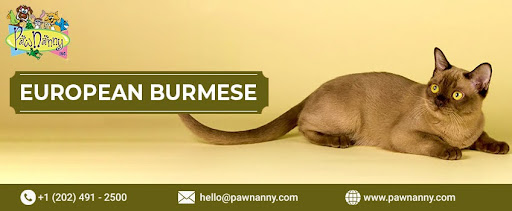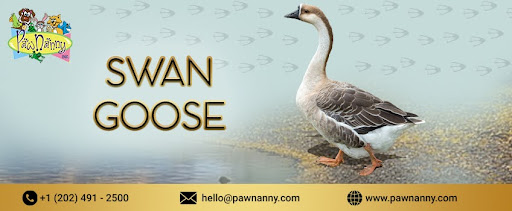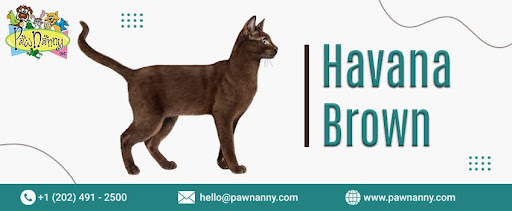
European Burmese
Size: 12 - 15 inches
Weight: 8 - 12 pounds
Hypoallergenic: No
Lifespan: 10 - 16 years
Behavior
The European Burmese is friendly and in contact with its owner, which is considered very interactive. People-oriented is the typical hallmark of these cats since they require interaction with their owners. These animals develop close relations with family members and love being in the middle of a gathering. Being friendly, kind, loyal, and gentle makes them suitable for families, single persons, and senior citizens. Intelligent and easily trained, the European Burmese like games and toys that require using their minds and can entertain themselves. They are happy until they grow up and keep wandering around or checking anything new or has changed around them. They like to climb and will constantly sit somewhere high to oversee their territory, making Pet House Sitting Services important whenever you leave your house.
These cats can meow but are not loud cats, and when they request or even to get attention, they will use normal, soft, and sweet voices. They are sociable with other pets and children, thus there are no problems when they are taken as additional pets. However, they fear loneliness and will get bored when left alone for most of the day or at night. European Burmese cats are easily affected by the mood of their owners and adapt to it offering cuddles when the owner feels low. They also do well where encouragement is given and do much better where they feel loved and secure. However, Burmese is a friendly, intelligent, and playful cat breed, and European Burmese is, therefore, a very popular breed of pets among families hunting for loving, active pets requiring Overnight Pet Sitting at all times.
History
American naval doctor Dr. Joseph Thompson conducted the first European Burmese expedition in 1930 by importing the walnut-colored cat Wong Mau from Burma (Myanmar). The breeders adopted Wong Mau to mate with a Siamese cat resulting in offspring with different color and coat patterns. These offspring in subsequent years made the foundation for the breed. When Burmese was becoming popular in the United States, the same experience also occurred in the United Kingdom. The Burmese cats were introduced in Britain from America in the 1940s and 1950s, and backyard breeding started. Yet the British breeders established a slightly different standard, appreciating more slender and lighter-built cats, softer lines, and a greater variety of colors in their coats. The variation in breeding preference ultimately informed the development of the presently recognized European Burmese which is different from the American Burmese.
The European Burmese has a short, soft coat of ten standard colors ranging from brown to lilac, chocolate, and red hues. European Burmese cats have almond-shaped eyes and body textures that feel smoother than those of American Burmese cats. People highly desire this breed because it displays friendly attitudes, strong intelligence, and enthusiastic personality traits. Due to breeders' dedication to bringing an unmodified purebred, European Burmese became popular even though the breed remains new.
Looks & Health
The European Burmese is a medium-sized cat of graceful appearance with soft, shiny, close-lying fur. A sleek muscular body portraying an athlete's muscle anatomy appears muscular and graceful. The head is slightly convex on top and pointed at the rear, and large, bright, friendly eyes are predominantly golden or amber. The ears are medium-sized vent instantly and slightly tilted forward, giving the cat the smart and alert look of a cat keen to get to know you. The coat is smooth, dense, short, and glossy, with a plain or warm-toned hue ranging from browns, soft blues, chic chocolates, lilacs, and creams. All are vivid and complement the breed's overly groomed, royal look. The European Burmese preserves the perfect balance between self-confidence and cuteness and has a very elegant appearance – that is why it is loved and desired.
The European Burmese is a very healthy cat breed that can be rarely affected by health problems. However, like any other purebred cat, the breed may inherit some hereditary diseases. Issues include dental issues like gingivitis and rare diseases, which can be solved through dental checkups. It also makes them prone to the genetic disorder hypokalemia and low potassium levels, which can lead to muscle weakness. This disease should be diagnosed early, and one can do this by having your pet go through routine checkups, including blood tests. Another predisposing factor the European Burmese cats develop is Obesity - this results from feeding them large portions of food, thus requiring close monitoring of their diet and constant exercise during Pet House Sitting Services.
They need regular physical check ups like any other pet and regular immunizations and anti-parasite treatments. Owners need to pay attention to clinical signs of disease, for instance, lack of energy or change in eating habits because such symptoms can easily be treated, and affected pets need to be taken to the vet. Given the right care and attention with pet house sitting services in Fairfax, the European Burmese can survive long, healthy years and remain engaged in many activities.
Food & Nutrition
The European Burmese cat is a beautiful breed with a glossy coat and playful temperament. Like every cat, it needs a proper diet in quality and balanced food. Being an active breed, they need high-quality proteins for muscles and energy - chicken, turkey, and fish may be included. Fresh primarily wet with dry food will give moisture and help avoid the problems that many types of cats get with urinary systems. European Burmese cats should be provided with balanced nutritious food supplements such as essential fatty acids, including omega-3 and omega-6, that enhance skin and coat. They are also good for the brain and assist in maintaining a healthy immune system.
Since the European Burmese cat is slender by compliment, one should not free-feed their cat. This way they will not be overweight by having too many treats and the portions will be under control. It is necessary to give them fresh water daily, at least next to their meals, which should be especially noted during Overnight Pet Sitting. This is not a specific diet plan and any changes to diet should always be discussed with a vet due to your pet baby’s age, weight, and health conditions.
Conclusion
Altogether, the European Burmese is a pleasant breed distinguished by its love for people, playfulness, and striking looks. These cats are not only beautiful with muscular bodies and glossy coats but are also very affectionate pets. Their pet parents love them because of their friendly nature; they are family dog-friendly and suitable for kids and other household pets. Oddly, they are not hypoallergenic but because of their low shedding characteristics, which are more manageable than some other breeds. They live for about 10 – 16 years meaning there can be many years of company before they pass on. Make sure to take them to visit the vet from time to time, needing to be closely monitored for their emotional and physical health needs. The European Burmese makes a wonderful addition because it is gorgeous and friendly. For more information or to avail our pet house sitting services in Fairfax, visit Pawnanny.com!










